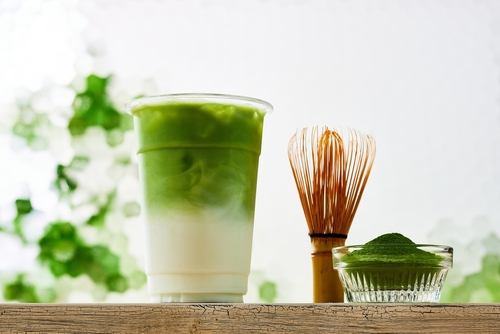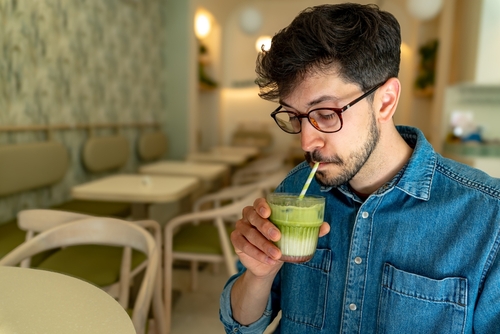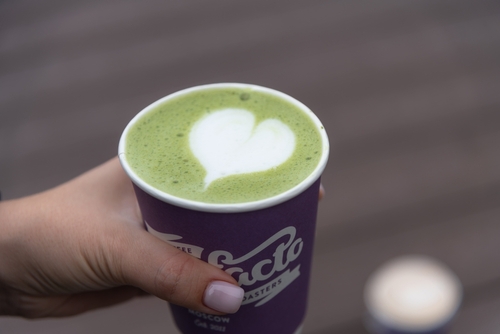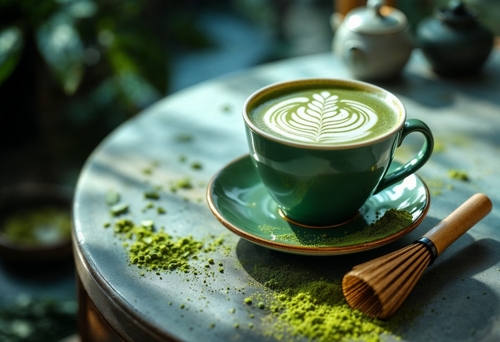You’ve seen it on cafe menus, all over your Instagram feed, and maybe even in your local grocery store. Matcha, the vibrant green powder, has become a global sensation. But what’s behind its surge in popularity? This post explains what matcha is, where it comes from, and why it has become a staple for so many people. Matcha is more than just a trendy beverage; it has a rich history and offers several unique qualities. Its rise can be attributed to a combination of health benefits, cultural significance, and its versatile nature. Understanding these aspects can help you appreciate why this green tea has captured the attention of millions. From its ceremonial roots in Japan to its modern-day status as a superfood, we’ll explore the reasons behind matcha’s enduring appeal.
What is Matcha?
Matcha is a finely ground powder of specially grown and processed green tea leaves, traditionally from Japan. Unlike regular green tea, where leaves are steeped in water and then discarded, with matcha, you consume the entire leaf. This is what gives it a more concentrated flavor and a higher amount of caffeine and antioxidants.
The process of creating matcha is meticulous. The tea plants, Camellia sinensis, are shade-grown for about three to four weeks before harvest. This process increases the chlorophyll content, which gives the leaves their bright green color and boosts the production of amino acids, particularly L-theanine. After harvesting, the leaves are steamed, dried, and then stone-ground into a fine powder.

The Health Benefits of Matcha
One of the primary drivers of matcha’s popularity is its impressive list of potential health benefits. Because you consume the whole leaf, you get a potent dose of nutrients that you wouldn’t get from standard steeped tea.
Packed with Antioxidants
Matcha is rich in catechins, a class of plant compounds in tea that act as natural antioxidants. One specific catechin, epigallocatechin gallate (EGCG), is found in exceptionally high concentrations in matcha. Antioxidants help stabilize harmful free radicals, which are compounds that can damage cells and cause chronic disease.
Boosts Brain Function
The combination of caffeine and L-theanine in matcha creates a unique effect. L-theanine is an amino acid that promotes a state of relaxation and well-being without causing drowsiness. When paired with caffeine, it can induce a state of calm alertness. Studies suggest this combination can improve attention, memory, and reaction time. Instead of the jittery rush associated with coffee, many matcha drinkers report a sustained, stable energy boost.
Supports Heart Health
Green tea, in general, is known for its heart-healthy properties, and matcha is no exception. The catechins in matcha may help lower levels of “bad” LDL cholesterol and triglycerides. This contributes to better cardiovascular health and can reduce the risk of heart disease and stroke.

A Versatile Flavor Profile
Beyond its health benefits, matcha’s versatility has made it a favorite among foodies and cafes. Its distinct flavor—earthy, slightly sweet, and with a savory umami finish—works well in a variety of recipes.
Matcha Lattes and Drinks
The matcha latte has become a coffee shop staple. Made with milk (dairy or plant-based) and a touch of sweetener, it’s a creamy, comforting beverage that offers a gentler caffeine kick than coffee. You can also find matcha in smoothies, juices, and even cocktails.
Culinary Uses
The culinary world has embraced matcha with open arms. Its fine powder form makes it easy to incorporate into both sweet and savory dishes. You can find matcha in:
- Desserts: Ice cream, cakes, cookies, and macarons.
- Breakfast Foods: Pancakes, waffles, and oatmeal.
- Savory Dishes: Sauces, marinades, and even as a seasoning for vegetables and fish.
This adaptability allows people to enjoy matcha’s benefits and flavor in many different ways, contributing to its widespread appeal.

Cultural Significance and Mindfulness
Matcha holds a special place in Japanese culture, where it is the centerpiece of the traditional tea ceremony, or chanoyu. This ceremony is a mindful, spiritual practice that emphasizes harmony, respect, purity, and tranquility. The ritual of preparing and drinking matcha is a form of meditation, encouraging participants to be present in the moment.
This connection to mindfulness resonates with many people today who are seeking ways to slow down and de-stress. The act of whisking the matcha powder with a bamboo whisk (chasen) until it becomes a frothy, smooth liquid can be a calming daily ritual. This element of wellness and tradition adds a deeper layer of meaning to drinking matcha that goes beyond just its taste or health benefits.
What’s Next for Matcha?
Matcha has successfully transitioned from a traditional Japanese ritual to a modern global phenomenon. Its combination of health advantages, unique flavor, and cultural depth has secured its place in the wellness and culinary worlds. As more people discover its benefits and versatility, the popularity of matcha is only set to grow. It’s a beverage that offers a moment of calm, a boost of energy, and a connection to a rich cultural heritage—all in one vibrant green cup.
Frequently Asked Questions
Is matcha better for you than coffee?
Matcha and coffee both have health benefits, but they affect the body differently. Matcha provides a more sustained, calm energy boost due to the L-theanine, which helps prevent the caffeine crash some people experience with coffee. It’s also higher in certain antioxidants. Coffee, however, is a major source of antioxidants for many and has been linked to a reduced risk of several diseases. The “better” option depends on your personal tolerance for caffeine and your health goals.
How much matcha can you drink in a day?
While matcha is healthy, it’s best consumed in moderation due to its caffeine content. One to two servings (about 1-2 teaspoons of powder) per day is generally considered safe for most adults. Drinking too much can lead to side effects like an upset stomach or irritability from the caffeine.
Does all matcha taste the same?
No, the taste of matcha can vary significantly based on its quality or “grade.” Ceremonial-grade matcha, the highest quality, is made from the youngest tea leaves and has a smooth, delicate, and slightly sweet flavor. It’s best for drinking on its own with water. Culinary-grade matcha is made from older leaves and has a more robust, slightly bitter flavor, which makes it suitable for lattes, smoothies, and baking, as it can stand up to other ingredients.
